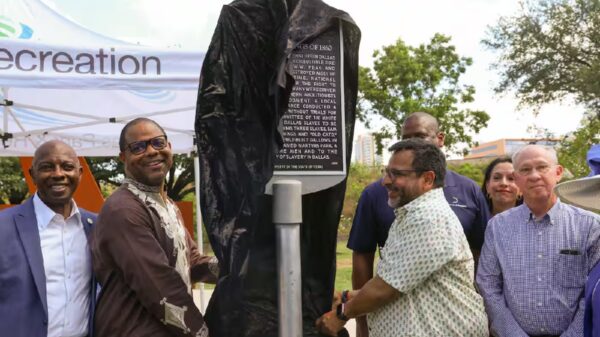A Conversation with University California Riverside’s Professor of History Natasha McPherson
To understand the history of rice in America, Black Voice News sought to explore historical records, accounts and images. Examining not only the grain’s impact on the slave trade, but on enslaved communities, was critical to understanding and portraying the grain’s role in American society from the 17th century to modern day.
In conversation with University of California, Riverside Professor of History, Natasha McPherson, we discussed rice’s history in African American culture and how it became an American commodity.
“[Slaves] bring their [rice] techniques with them, and they do find ways to survive within slavery by performing these tasks and it’s contributed to food cultures across the Americas. Anywhere where Africans have gone you’re going to see rice there,” McPherson explained.
Utilizing archival images from enslaved populations who were forced to work on rice plantations across the American Southeast, the photographs provide visual representation of what McPherson describes throughout the interview.

BVN:
How did the climate of rice production impact not only trade, but the enslaved population?
NM:
In South Carolina, we know that history used to say that the white Europeans taught the Africans how to grow rice, and now we know that it is the reverse—that the Africans taught the Europeans how to grow rice.
Rice cultivation takes a lot of work. You have to construct the fields, you have to find ways to flood the fields with water. It’s not an easy crop to grow, like say, tobacco. You really have to have some knowledge of how to do this and enslaved Africans from the west coast of Africa bring those techniques with them.
Rice growing is dangerous work. Now, lots of southern crops and crops that are grown in the Caribbean are dangerous to grow. But,[growing] rice is particularly dangerous in South Carolina and in other tropical places because it requires flooding of standing water, which breeds mosquitoes and malaria. So, this is work they’re [plantation owners] pretty happy to allocate to Africans. Africans are going to teach both the English in South Carolina and the French in Louisiana how to cultivate rice.
During slavery, we distinguish there were some societies that had slavery and there were some slave societies. South Carolina is a slave society.. It’s overwhelmingly Black, in part, because it’s just a deadly place, it’s tropical. A lot of the white planters would leave during the summer because it’s just too hot. It’s a disease-ridden place until they can irrigate and move water. It’s a deadly place to live.”

BVN:
How did this process of rice cultivation socially shape slave societies?
NM:
It’s [the system of cultivating rice] something that can make you feel empowered. It’s enough to make you feel like you have some self-esteem, that you have the things that slavery is trying to do away with. Being in these complex, socially hierarchical slave communities can give one a sense of self and place and belonging, and purpose. I don’t think it’s an accident that the places that grew rice also grew these really rich, Black cultures.
BVN:
Can you describe a bit more of what these societies may have looked like?
NM:
If you have these large scale plantations, you’ve got the cattle driver, you’ve got the driver of the wagon, you’ve got, not just the people that hold the fields, but somebody who’s going to be responsible to flood the fields. Each of these jobs afforded somebody a high place within the social hierarchy in this community, which lends itself to a certain type of depth and richness that I don’t think we think about when we think about enslaved communities – this kind of cultural depth and richness that emerges in rice plantations and other sorts of large scale plantation communities.


BVN:
In what way has rice been passed down within African American culture?
NM:
Processing of rice was mostly done by Black women in the south, [including] basket shaking where they’re separating the rice from the whole. I think that’s important because when we think about its long history, rice is still a very popular dish and in the Black south, Black women are also still passing that down as cooks. They’re continuing to carry those recipes in those traditions into freedom, using rice as a staple.

BVN:
What distinctive impact did rice have on the enslaved people that produced it in comparison to other crops?
NM:
There’s just these really practical rhythms to life that rice kind of occupies. Taking small bits of meat and vegetables and a little bit of seasoning, it turns into a meal. So, for poor people across the Americas – African descended people, you can turn a little bit into a lot with rice.
Red beans and rice in New Orleans is a tradition that happens on Mondays. They call it “red beans and rice Mondays,” in part because you would have cooked the ham on Sunday and wash day is Monday. So for women who do this work, they take that ham bone from Sunday, throw it in a pot on Monday because they’re too busy washing. Now you have red beans and rice for dinner on Monday.”

BVN:
It has been said that rice was originally brought to the Americas in the hair of slaves as West African cultures were known to braid rice in their hair for spiritual and protective purposes . Can you speak to this part of history?
NM:
You need to find the historian who says that, not just a writer, because we have so many incredibly true stories in African American history, we don’t need these kinds of magical tales of how it happened.
McPherson’s practical explanation is contrary to this well recorded belief. According to McPherson: “It usually isn’t that, right? It’s usually just practical things. [For example:] They didn’t know where they were going. They were forced onto a ship. It’s really driven by capital. It’s driven by money. They [slave traders] are not going ‘to not know’ what rice is, because they’re connected to the global market. They know that rice has been grown. They know that the Portuguese are going to try it in Brazil and it’s going to be extremely successful and they’re going to try it [too].”

Still I Rice! is part of the Black Voice News series, Centerpoint: The Healing Power of Cultural Connections, funded by Ethnic Media’s Stop the Hate campaign administered by the California State Library.









You must be logged in to post a comment Login